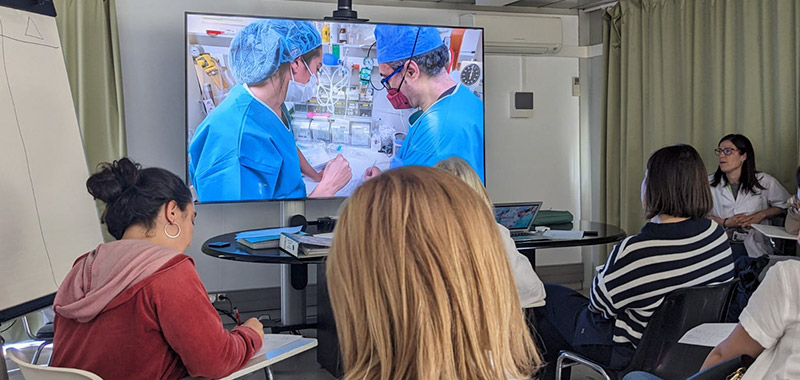
There is extensive evidence of the benefits of debriefing in the clinical setting. It has been associated with an improvement in the results of cardiopulmonary resuscitation, the efficiency of trauma care teams, the identification of surgical errors, or neonatal resuscitation after urgent caesarean sections. Therefore, clinical debriefing has been linked to an improvement in staff performance and patient outcomes, as well as team dynamics and efficiency. Debriefing after a clinical event provides the opportunity to identify and discuss gaps in knowledge or clinical performance as well as promote strategies for improvement. When applied to the performance of interdisciplinary teams, it can also facilitate the improvement of interpersonal communication skills, teamwork and professionalism.
Despite the potential benefits of debriefing, implementation in clinical practice has not occurred in most cases. The causes are multiple and include barriers such as the absence of an appropriate place, lack of time for debriefing or training to facilitate it, but also cultural barriers such as lack of knowledge of the technique, mistrust in its usefulness for improving results, fear of being criticized during the debriefing or lack of administrative support. Clinical debriefing should ideally be short and focused on pre-set objectives for greater acceptance and feasibility in the clinical setting. Facilitation during debriefing can be carried out by the participants in the clinical action themselves in the absence of trained facilitators. There are simple methods to guide debriefing such as the “plus-delta” method, or the TALK aproach that are useful in this type of debriefing.
Knowledge and training in clinical debriefing are the first steps to start debriefing in the clinical setting. The simulation group of Hospital Clinic (SimClinic) has recently held a course aiming to introduce clinical debriefing in the maternity area. A one-day course addressed to gynecologists, anesthesiologists, neonatologists, midwifes and assisstance nurses was developed. It consisted on a theoretical module that explained the concepts of clinical debriefing, the available methods to perform it in the clinical setting, and examples of clinical situations in which clinical debriefing could be carried out in the obstetrics area. Afterwards, a video of a simulated obstetric situation was projected in which the healthcare team subsequently carried out a clinical debriefing. Finally, the participants performed by themselves a clinical debriefing of a simulated clinical event that was previously viewed. The course was repeated four times so that all staff had the opportunity to participate. The satisfaction survey showed a very positive overall assessment of the course. All participants thought the course was useful for their daily work and most of them felt themselves capable of performing a clinical debriefing after the course.
The prior existence of a safety culture among professionals and appropiate training are essential for the implementation of clinical debriefing. This must be in any case confidential and in no case considered as a criticism of the work done, but rather as an opportunity for learning and improvement.
Written by Beatriz Tena in behalf of the Barcelona team




